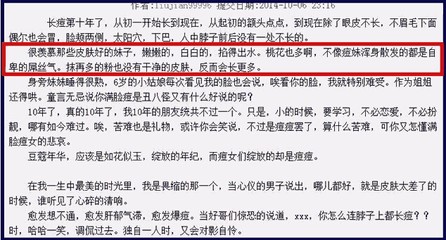(I) Proposed Title
这是整个RP的标题,点名文章的主题
(II) Introduction
对整个文章的背景进行交代和介绍,从而引出想要研究的问题。
(III) Brief Literature Review
对以前这方面领域研究的经典文献的简短回顾,总结最近的成果,从而提出最新的研究课题。
(IV) Methodology
将要采用的研究方法。
(V) Proposed Research Time-Table
研究时间表。将整个研究过程划分为几个阶段,逐一确定各个阶段要完成的研究任务。
(VI) Reference
应用的文献列表。
Research Proposal 范文及分析
XXX; D. Phil Proposal; Dept. of Sociology, XXX
(I) Proposed Title
(II) Introduction
(III) Brief Literature Review
Environmental Variables and Crime
Rational Choice
Crime Prevention through Environment Design (CPTED)
(IV) Methodology
Participant Observation
Individual Interviews
Community Observation
Analysis of Official/Unofficial Statistic
(V) Proposed Research Time-Table
(VI) References
(I) Proposed Title //New Town地区青少年不良行为和环境变量的关系
The Relationship between Juvenile Delinquency and EnvironmentalVariables in New Town, Tuen Mun
(II) Introduction //对青少年不良行为的研究介绍
(III) Brief Literature Review //对以往青少年不良行文研究文献的回顾,涉及三个方面
Environmental Variables and Crime //第一个方面
Rational Choice //第二个方面
Crime Prevention through Environment Design (CPTED) //第三个方面
(IV) Methodology //研究采用的方法
In order to test the hypothesis of the study and examine the mainquestions raised, the following methodology will be employed.
Participant Observation:
Participant observation with a group of juvenile delinquents ormarginal youthsin Tuen Mun will be carried out. The aim is tocollect more qualitative information about their life style andbehaviour. Through cautious participation and observation of thejuvenile delinquents' daily and routine activities, I hope to findout how their delinquent patterns have been influenced byenvironmental factors. I propose to associate myself with TuenMun's juvenile delinquents through the help of the districtoutreaching social work team. I will ask them to introduce me totheir clients and rely on a "snowball effect" to approach moresubjects. This means making friends with one or more clients andthen asking him/her to introduce their friends to me.
Individual Interviews:
Individual interviews by a way of structured questionnaire willalso be used to collect information about the juvenile delinquents'perception of the environment. The interview is especiallyimportant for examining questions like "What kind of environmentcould encourage juveniles to make the rational choice' to commitdelinquency?". I will also attempt to interview police officers andsecurity guards about the effectiveness of both natural andofficial "guardianship" in these communities.
Community Observation:
To collect information about the physical features of Tuen Mun,Tseung Kwan O and Kowloon City, systematic observations will becarried out. Through several community surveys of the physicalsettings, I will measure the prevalence or absence of environmentalfeatures suggested by CPTED as significant to crime control. Bycomparing the physical environment of the three studied areas thedifferent environmental influences on the opportunity for juveniledelinquency can be gauged.
Analysis of Official/Unofficial Statistic:
In order to gain a fuller picture of the situation of juveniledelinquency in Tuen Mun, Tseung Kwan O and Kowloon City, acomprehensive analysis of the official statistics will also beundertaken. Besides official data, other sources of statisticaldata produced by agencies such as District Social Service Center orYouth Committee and Hong Kong Census and Statistics Department(Crime Victim Survey) will also be used. I will pay especialattention to information about the location of juvenile delinquencyand the types of delinquency committed in particular places.
(V) Proposed Research Time-Table //拟定的研究时间表
Sept 1996----Apr 1997 :
- Literature review- Official contact with the outreaching socialwork team, RHKPF and other agencies- Community surveys of the threeareas- Design the questionnaires- Collection of official andunofficial statistic
May 1997----Jun 1997 :
- Statistical analysis of crime and place- Find the targets-Community observation (Tuen Mun)
Jul 1997----Sept 1997 : - Field Work
- 1st session Participant Observation of Tuen Mun's JD
Oct 1997----Nov 1997 : - Field Work
- Community observation (Kowloon City and Tseung Kwan O)- Interviewthe police officers and security guards
Dec 1997----Feb 1998 : - Field Work
- 2nd session Participant Observation of Tuen Mun's JD
Mar 1998----Apr 1998 :
- Analysis of the data obtained from the field work
May 1998----Aug 1998 :
- Write the Thesis
(VI) References //参考文献
How to Write a Research Proposal
Paul T. P. Wong, Ph.D., C.Psych.
Research Director, Graduate Program in Counselling Psychology
Trinity Western University
Langley, BC, Canada
Most students and beginning researchers do not fully understandwhat a research proposal means, nor do they understand itsimportance. To put it bluntly, one's research is only as a good asone's proposal. An ill-conceived proposal dooms the project even ifit somehow gets through the Thesis Supervisory Committee. A highquality proposal, on the other hand, not only promises success forthe project, but also impresses your Thesis Committee about yourpotential as a researcher.
A research proposal is intended to convince others that you havea worthwhile research project and that you have the competence andthe work-plan to complete it. Generally, a research proposal shouldcontain all the key elements involved in the research process andinclude sufficient information for the readers to evaluate theproposed study.
Regardless of your research area and the methodology you choose,all research proposals must address the followingquestions: What you plan to accomplish, why youwant to do it and how you are going to do it.
The proposal should have sufficient information to convince yourreaders that you have an important research idea, that you have agood grasp of the relevant literature and the major issues, andthat your methodology is sound.
The quality of your research proposal depends not only on thequality of your proposed project, but also on the quality of yourproposal writing. A good research project may run the risk ofrejection simply because the proposal is poorly written. Therefore,it pays if your writing is coherent, clear and compelling.
This paper focuses on proposal writing rather than on thedevelopment of research ideas.
Title:
It should be concise and descriptive. For example, the phrase,"An investigation of . . ." could be omitted. Often titles arestated in terms of a functional relationship, because such titlesclearly indicate the independent and dependent variables. However,if possible, think of an informative but catchy title. An effectivetitle not only pricks the reader's interest, but also predisposeshim/her favourably towards the proposal.
Abstract:
It is a brief summary of approximately 300 words. It shouldinclude the research question, the rationale for the study, thehypothesis (if any), the method and the main findings. Descriptionsof the method may include the design, procedures, the sample andany instruments that will be used.
Introduction:
The main purpose of the introduction is to provide the necessarybackground or context for your research problem. How to frame theresearch problem is perhaps the biggest problem in proposalwriting.
If the research problem is framed in the context of a general,rambling literature review, then the research question may appeartrivial and uninteresting. However, if the same question is placedin the context of a very focused and current research area, itssignificance will become evident.
Unfortunately, there are no hard and fast rules on how to frameyour research question just as there is no prescription on how towrite an interesting and informative opening paragraph. A lotdepends on your creativity, your ability to think clearly and thedepth of your understanding of problem areas.
However, try to place your research question in the context ofeither a current "hot" area, or an older area that remains viable.Secondly, you need to provide a brief but appropriate historicalbackdrop. Thirdly, provide the contemporary context in which yourproposed research question occupies the central stage. Finally,identify "key players" and refer to the most relevant andrepresentative publications. In short, try to paint your researchquestion in broad brushes and at the same time bring out itssignificance.
The introduction typically begins with a general statement ofthe problem area, with a focus on a specific research problem, tobe followed by the rational or justification for the proposedstudy. The introduction generally covers the followingelements:
State the research problem, which is often referred to as thepurpose of the study.
Provide the context and set the stage for your research question insuch a way as to show its necessity and importance.
Present the rationale of your proposed study and clearly indicatewhy it is worth doing.
Briefly describe the major issues and sub-problems to be addressedby your research.
Identify the key independent and dependent variables of yourexperiment. Alternatively, specify the phenomenon you want tostudy.
State your hypothesis or theory, if any. For exploratory orphenomenological research, you may not have any hypotheses. (Pleasedo not confuse the hypothesis with the statistical nullhypothesis.)
Set the delimitation or boundaries of your proposed research inorder to provide a clear focus.
Provide definitions of key concepts. (This is optional.)
Literature Review:
Sometimes the literature review is incorporated into theintroduction section. However, most professors prefer a separatesection, which allows a more thorough review of the literature.
The literature review serves several importantfunctions:
Ensures that you are not "reinventing the wheel".
Gives credits to those who have laid the groundwork for yourresearch.
Demonstrates your knowledge of the research problem.
Demonstrates your understanding of the theoretical and researchissues related to your research question.
Shows your ability to critically evaluate relevant literatureinformation.
Indicates your ability to integrate and synthesize the existingliterature.
Provides new theoretical insights or develops a new model as theconceptual framework for your research.
Convinces your reader that your proposed research will make asignificant and substantial contribution to the literature (i.e.,resolving an important theoretical issue or filling a major gap inthe literature).
Most students' literature reviews suffer from the followingproblems:
Lacking organization and structure
Lacking focus, unity and coherence
Being repetitive and verbose
Failing to cite influential papers
Failing to keep up with recent developments
Failing to critically evaluate cited papers
Citing irrelevant or trivial references
Depending too much on secondary sources
Your scholarship and research competence will be questioned if anyof the above applies to your proposal.
There are different ways to organize your literature review.Make use of subheadings to bring order and coherence to yourreview. For example, having established the importance of yourresearch area and its current state of development, you may devoteseveral subsections on related issues as:theoretical models, measuring instruments, cross-cultural andgender differences, etc.
It is also helpful to keep in mind that you are telling a storyto an audience. Try to tell it in a stimulating and engagingmanner. Do not bore them, because it may lead to rejection of yourworthy proposal. (Remember: Professors andscientists are human beings too.)
Methods:
The Method section is very important because it tells yourResearch Committee how you plan to tackle your research problem. Itwill provide your work plan and describe the activities necessaryfor the completion of your project.
The guiding principle for writing the Method section is that itshould contain sufficient information for the reader to determinewhether methodology is sound. Some even argue that a good proposalshould contain sufficient details for another qualified researcherto implement the study.
You need to demonstrate your knowledge of alternative methodsand make the case that your approach is the most appropriate andmost valid way to address your research question.
Please note that your research question may be best answered byqualitative research. However, since most mainstream psychologistsare still biased against qualitative research, especially thephenomenological variety, you may need to justify your qualitativemethod.
Furthermore, since there are no well-established and widelyaccepted canons in qualitative analysis, your method section needsto be more elaborate than what is required for traditionalquantitative research. More importantly, the data collectionprocess in qualitative research has a far greater impact on theresults as compared to quantitative research. That is anotherreason for greater care in describing how you will collect andanalyze your data. (How to write the Method section for qualitativeresearch is a topic for another paper.)
For quantitative studies, the method section typically consistsof the following sections:
Design -Is it a questionnaire study or a laboratory experiment?What kind of design do you choose?
Subjects or participants - Who will take part in your study ? Whatkind of sampling procedure do you use?
Instruments - What kind of measuring instruments or questionnairesdo you use? Why do you choose them? Are they valid andreliable?
Procedure - How do you plan to carry out your study? Whatactivities are involved? How long does it take?
Results:
Obviously you do not have results at the proposal stage.However, you need to have some idea about what kind of data youwill be collecting, and what statistical procedures will be used inorder to answer your research question or test you hypothesis.
Discussion:
It is important to convince your reader of the potential impactof your proposed research. You need to communicate a sense ofenthusiasm and confidence without exaggerating the merits of yourproposal. That is why you also need to mention the limitations andweaknesses of the proposed research, which may be justified by timeand financial constraints as well as by the early developmentalstage of your research area.
Common Mistakes in Proposal Writing
Failure to provide the proper context to frame the researchquestion.
Failure to delimit the boundary conditions for your research.
Failure to cite landmark studies.
Failure to accurately present the theoretical and empiricalcontributions by other researchers.
Failure to stay focused on the research question.
Failure to develop a coherent and persuasive argument for theproposed research.
Too much detail on minor issues, but not enough detail on majorissues.
Too much rambling -- going "all over the map" without a clear senseof direction. (The best proposals move forward with ease and gracelike a seamless river.)
Too many citation lapses and incorrect references.
Too long or too short.
Failing to follow the APA style. American PsychologicalAssociation
Slopping writing.
 爱华网
爱华网



